Le Casematte: Sicilian Winery
Le Casematte is a Sicilian winery which borns in 2008. It originated from the willing of Gianfranco Sabbatino, who is an accountant by profession and a winemaker by passion. Later Andrea Barzagni, who is an ex football player from Florence and for this reason he is also a passionate about wine, joins him in this project. The vineyards, that are located to up 500 meters above sea level in an area named Faro, overlook the Strait of Messina.
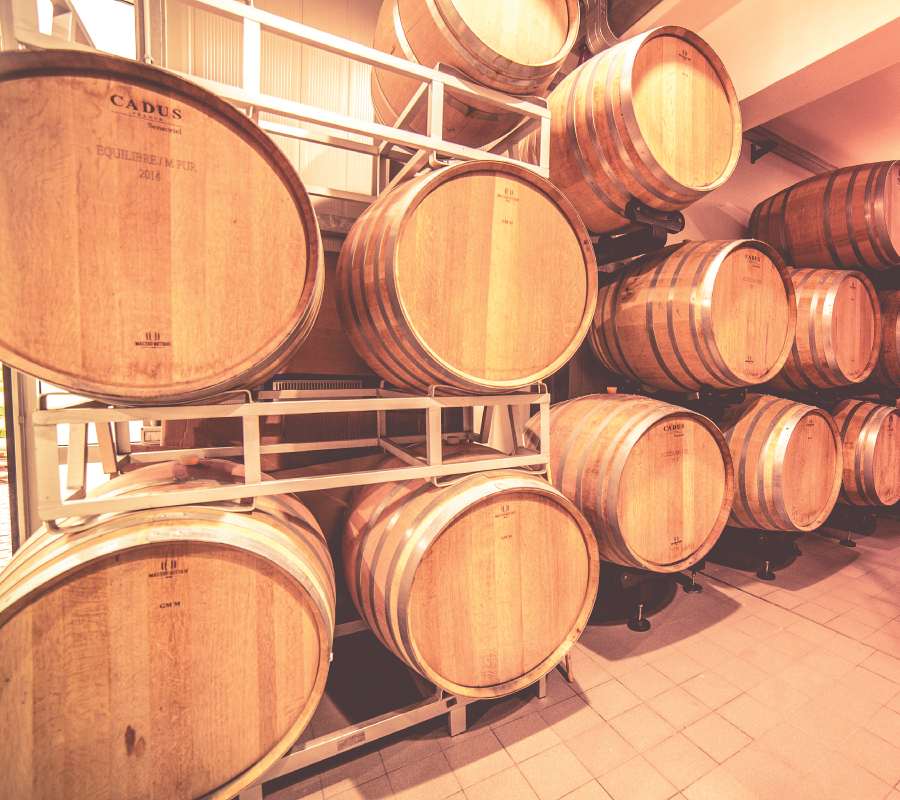
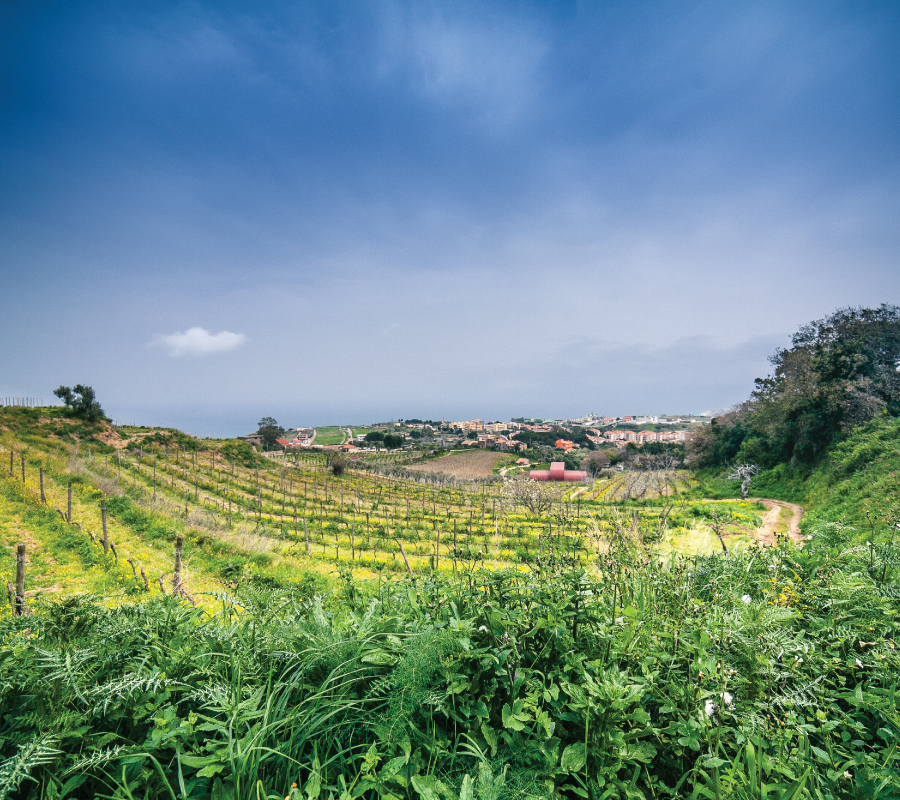
Why the name “Casematte”?
The vineyard that dominates the Strait of Messina is located in Faro Superiore, the hilly village that gives its name to the entire Faro Doc, in the northest part of Sicily. The winery owes its unique name to the presence of two casemates. The total extension of the vineyard is about 11 hectares and it is grown organically with Nerello Mascalese, Nerello Cappuccio, Nocera and Nero d’Avola varieties, in the percentages provided for by the Faro Doc disciplinary regarding the black berried grapes, as well as Grillo and Caricante
regarding the white berried grapes. The growing systems adopted are bush- trained and espalier. Nerello Mascalese (Niuriddu Mascalisi in Sicilian dialect) is a vine that has historically spread in the Messina and the Etna areas. It ripens very late and its harvest takes place between the second and the third week of October.
Nerello Cappuccio (also known as Nerello Mantellato) is a vine similar to Nerello Mascalese as regards its diffusion and its use, so much so that both varieties contribute to the production of Faro Doc and Etna Doc wines. Its name is due to the particular conformation of the grape, grown as a bush-trained. Its origin is unknown but it has been cultivated locally for several hundred years.
The Nocera grape is ampelographically very similar to the Nerelli. It has been traditionally cultivated in Sicily in the Messina area since very ancient times. Some believe that it is linked to the historic “Mamertinum” and “Zancle” wines, which were celebrated by the ancient Latins. This vine was also "exported" to Calabria region with some success, and in the middle of the last century even to France: in particular to Provence and to Beaujolais (hometown of the young wine), where it spread with the names of “Suquet and “Barbe du Sultan” .
The name of the Nero d’Avola vine comes from the word Calaulisi mistakenly turned in Calabrese dialect, while, according to other people, it comes from a family owner of the Avola vineyards. The word Cala is the dialectal form of Calea or Caleu, both were Sicilian synonyms of racina or grape. The word Aulisi indicates “Aula”, which means the city of Avola in dialect. In summary, people
used to say Grape of Avola or Calea-Aulisi, and ultimately Calaulisi. The graft of the first Nero d’Avola was performed in Avola. Therefore the origin of the name Nero d’Avola dates back in very remote times.
Territory and Vines.
The modern and functional winery has recently been expanded, and it has also been equipped with a new barrel cellar for aging and with a comfortable and panoramic tasting room. The hilly lands where the terracing of our vineyards are located, extending up to about 500 meters above sea level, are exposed to the north and overlook the sea. The winds coming from the Ionian and the Tyrrhenian Sea, that cross in the facing Strait of Messina, create a particular microclimate that greatly favors the temperature range between day and night, even in midsummer, so as not to thermally stress our vines during the delicate ripening phase.
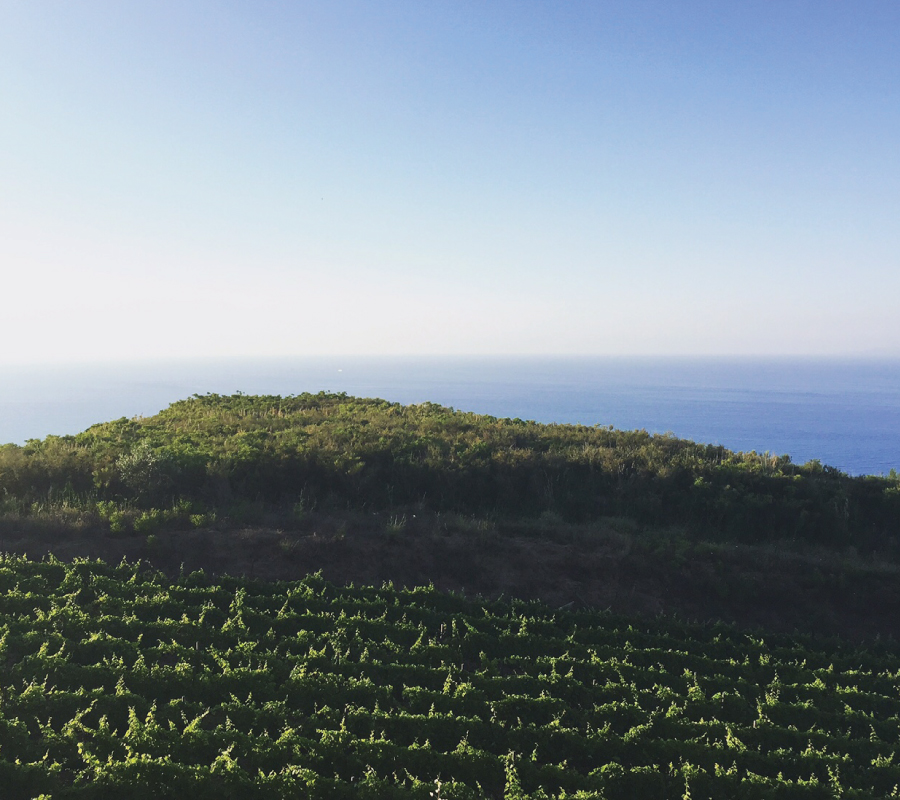
Grape Varieties
The total extension of the vineyard is about 11 hectares and it is grown organically with Nerello Mascalese, Nerello Cappuccio, Nocera and Nero d’Avola varieties, in the percentages provided for by the Faro Doc disciplinary. Nerello Mascalese (Niuriddu Mascalisi in Sicilian) is a vine that grows in the Etna area in the Catania district, and in the Capo Faro area in the Messina district. Its name is due to the fact that it has been cultivated for centuries in the area of the Mascali County, on land made up of volcanic sands for the most part. It ripens very late and its harvest takes place between the second and third week of October. Nerello Cappuccio (also known as Nerello Mantellato) is a vine cultivated at the foot of the Etna vulcan in the Catania and the Messina districts, and it contributes to the production of Faro Doc
and Etna Doc wines. Its name is due to the particular conformation of the grape, grown as a bush- trained. Its origin is unknown but it has been cultivated locally for several hundred years. The Nocera grape is ampelographically very similar to the Nerelli. It has been traditionally cultivated in Sicily in the Messina area since very ancient times. Some believe that it is linked to the historic “Mamertinum” and “Zancle” wines, which were celebrated by the ancient Latins. This vine was also “exported” to Calabria region with some success, and in the middle of the last century even to France: in particular to Provence and to Beaujolais (hometown of the young wine), where it spread with the names of “Suquet” and “Barbe du Sultan” .
The name of the Nero d’Avola vine comes from the word Calaulisi mistakenly turned in Calabrese dialect, while, according to other people, it comes from a family owner of the Avola vineyards. The word Cala is the dialectal form of Calea or Caleu, both were Sicilian synonyms of racina or grape. The word Aulisi indicates “Aula”, which means the city of Avola in dialect. In summary, people
used to say Grape of Avola or Calea-Aulisi, and ultimately Calaulisi. The graft of the first Nero d’Avola was performed in Avola. Therefore the origin of the name Nero d’Avola dates back in very remote times.
The Team
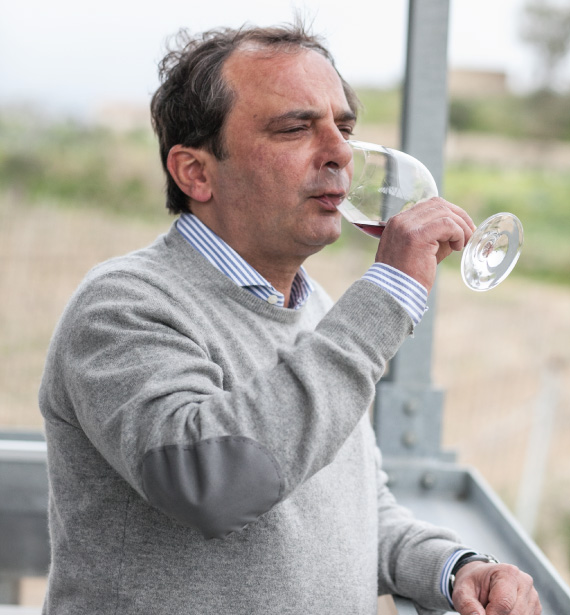
Gianfranco Sabbatino
“What is destined for you will find the way to reach you.”
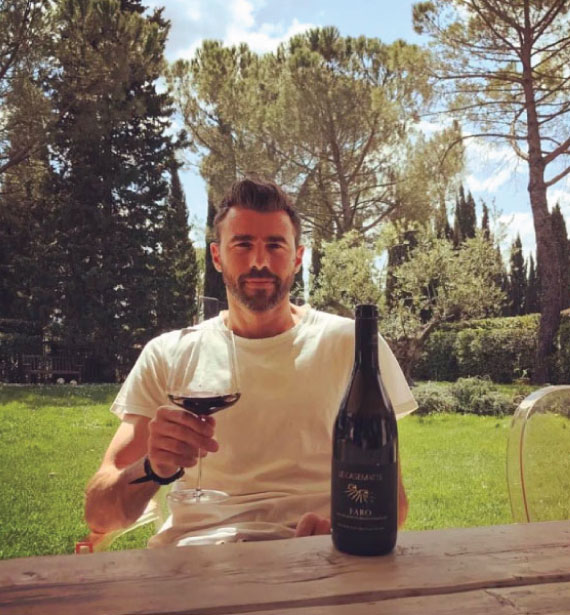
Andrea Barzagli
“Experience has little to teach if it is not lived humbly.”

